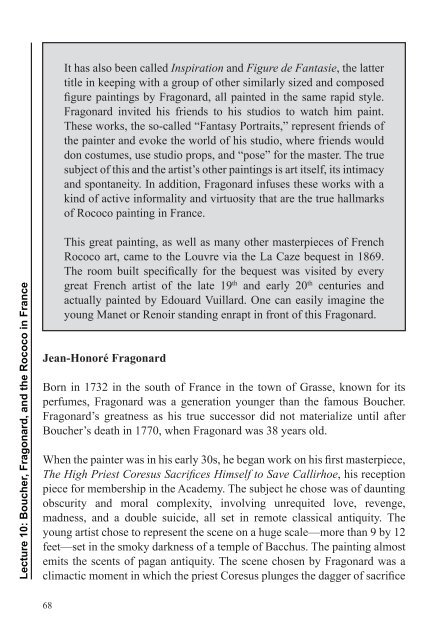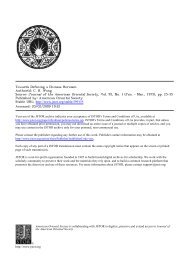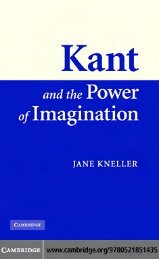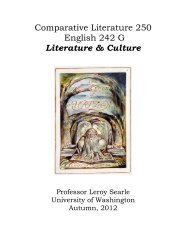Create successful ePaper yourself
Turn your PDF publications into a flip-book with our unique Google optimized e-Paper software.
Lecture 10: Boucher, Fragonard, and the Rococo in France<br />
68<br />
It has also been called Inspiration and Figure de Fantasie, the latter<br />
title in keeping with a group of other similarly sized and composed<br />
� gure paintings by Fragonard, all painted in the same rapid style.<br />
Fragonard invited his friends to his studios to watch him paint.<br />
<strong>The</strong>se works, the so-called “Fantasy Portraits,” represent friends of<br />
the painter and evoke the world of his studio, where friends would<br />
don costumes, use studio props, and “pose” for the master. <strong>The</strong> true<br />
subject of this and the artist’s other paintings is art itself, its intimacy<br />
and spontaneity. In addition, Fragonard infuses these works with a<br />
kind of active informality and virtuosity that are the true hallmarks<br />
of Rococo painting in France.<br />
This great painting, as well as many other masterpieces of French<br />
Rococo art, came to the <strong>Louvre</strong> via the La Caze bequest in 1869.<br />
<strong>The</strong> room built speci� cally for the bequest was visited by every<br />
great French artist of the late 19 th and early 20 th centuries and<br />
actually painted by Edouard Vuillard. One can easily imagine the<br />
young Manet or Renoir standing enrapt in front of this Fragonard.<br />
Jean-Honoré Fragonard<br />
Born in 1732 in the south of France in the town of Grasse, known for its<br />
perfumes, Fragonard was a generation younger than the famous Boucher.<br />
Fragonard’s greatness as his true successor did not materialize until after<br />
Boucher’s death in 1770, when Fragonard was 38 years old.<br />
When the painter was in his early 30s, he began work on his � rst masterpiece,<br />
<strong>The</strong> High Priest Coresus Sacri� ces Himself to Save Callirhoe, his reception<br />
piece for membership in the Academy. <strong>The</strong> subject he chose was of daunting<br />
obscurity and moral complexity, involving unrequited love, revenge,<br />
madness, and a double suicide, all set in remote classical antiquity. <strong>The</strong><br />
young artist chose to represent the scene on a huge scale—more than 9 by 12<br />
feet—set in the smoky darkness of a temple of Bacchus. <strong>The</strong> painting almost<br />
emits the scents of pagan antiquity. <strong>The</strong> scene chosen by Fragonard was a<br />
climactic moment in which the priest Coresus plunges the dagger of sacri� ce







